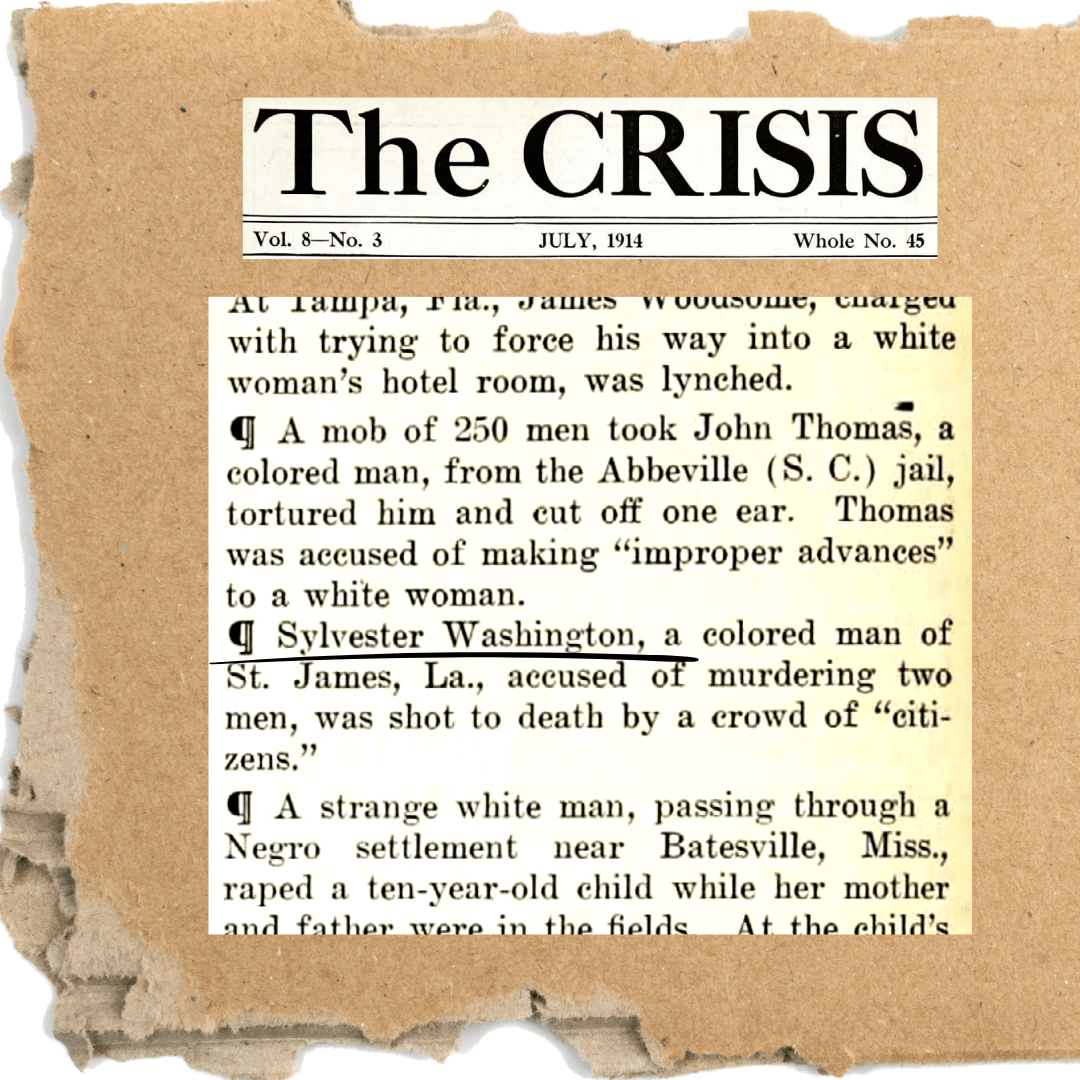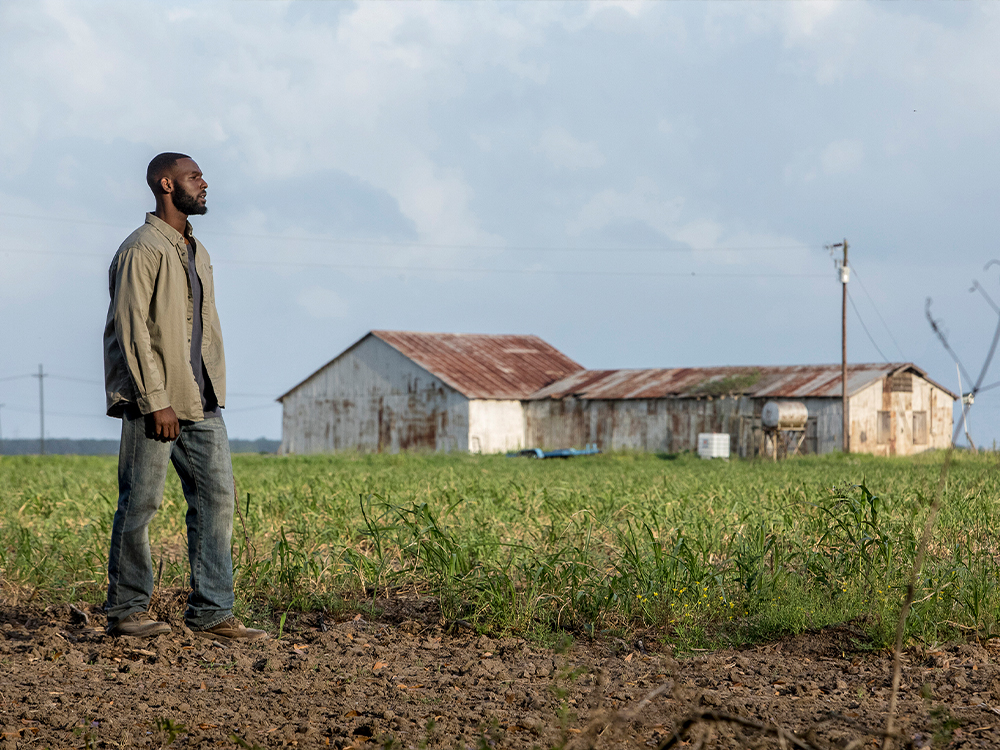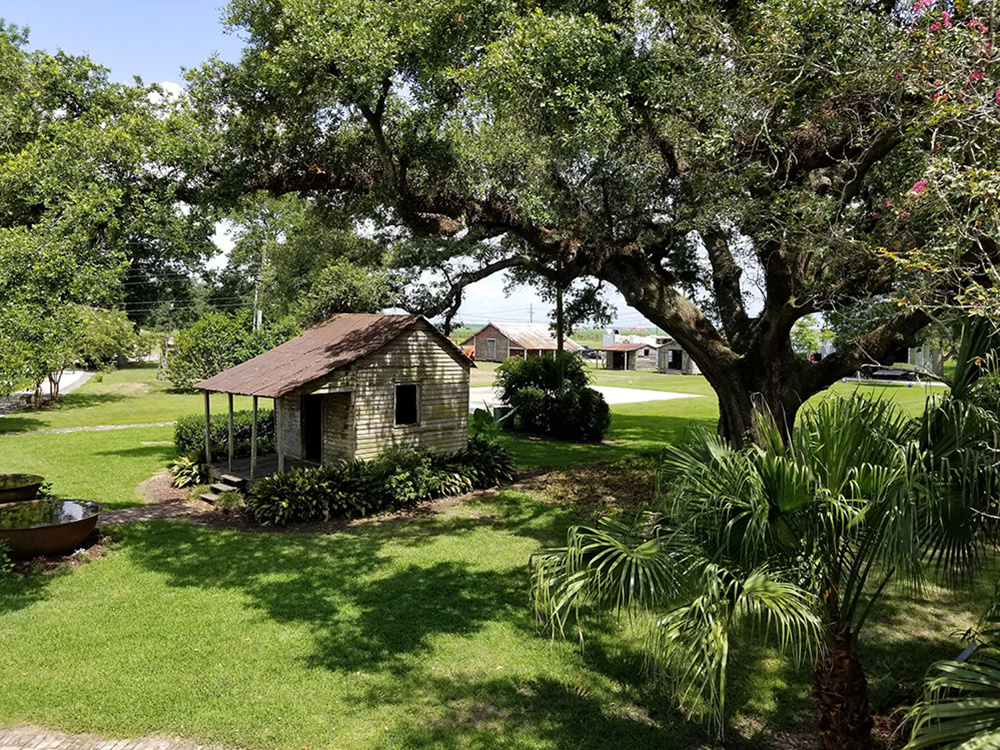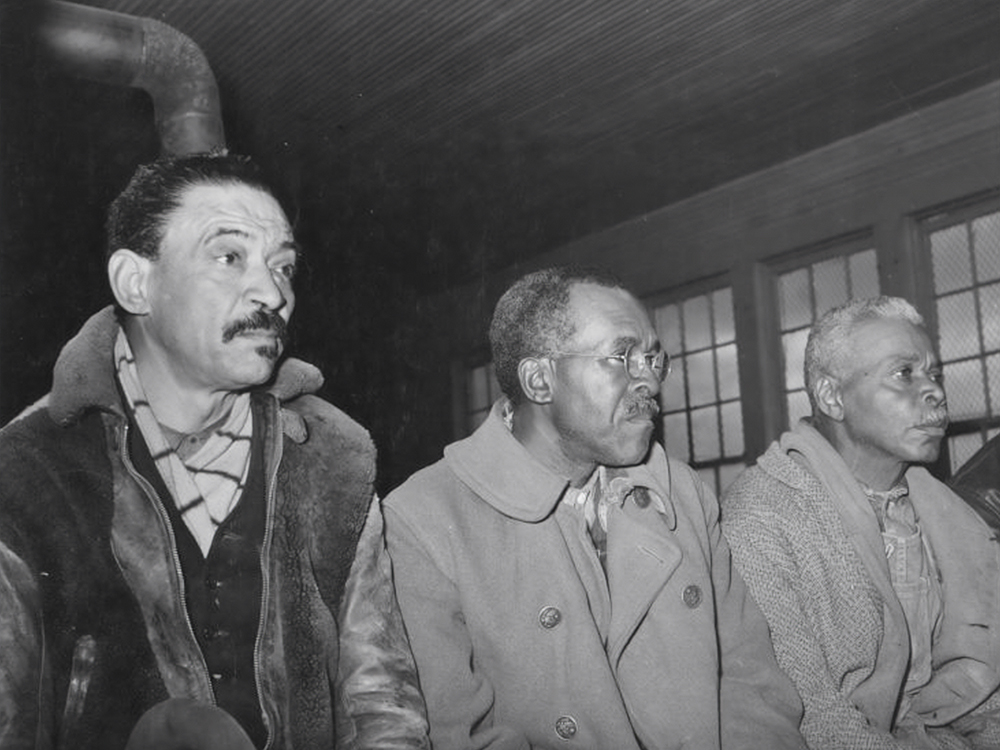Reader discretion advised. To our learners and teachers – This lesson contains detailed descriptions of extreme violence from contemporary accounts of lynchings. Details are included in an effort to convey the terrorism experienced by Black citizens of the United States in the early 20th century. Racial terror is a part of America’s history, but we understand that some details in this lesson may be overwhelming or inappropriate for learners.
LESSON 1: MODULE 2
Introduction
Angel Bordelon (b. 1870), great-great grandfather to Nova, Charley and Ralph Angel, came of age during the Jim Crow era while living on the Landry land with his family as sharecroppers. His parents saw freedom and rights given to Black citizens in the late 1860s, then witnessed those same rights stripped away through legal acts such as the Supreme Court’s 1896 Plessy vs. Ferguson decision, which affirmed Louisiana’s state law of segregation. Angel would eventually buy the land where his family was enslaved and pass it down to his heirs.
“One night the Landrys came to take the land back. Strung up Charles’ eldest brother, hung three more Bordelons over time, including Grandaddy Angel. His Aunties Millie, Queenie and Sara Jo cut him down in the dead of night, prayed over his body and soul and then buried him right.”
— Aunt Vi, QUEEN SUGAR
Explore the Photo
- In Season 7, Ralph Angel adds Tru’s name to the family Bible. The Bible also hold the names of the oldest recorded Bordelon ancestors, Annie (b. 1831) and Percy (b. 1847). In this photo of enslaved family members taken in 1862, which family members would most likely represent Annie and Percy?
- How many generations of family members do you believe are represented in this photo?
About the Photo
The enslaved family shown in this 1862 photo lived on the plantation of J.J. Smith in Beaufort, South Carolina. Timothy H O’Sullivan visited Smith’s plantation in 1862, taking multiple images of the plantations people and structures. Photo courtesy of the Library of Congress.
Emancipation Proclamation
Bordelon family becomes sharecroppers on the Landry land.
*From the television series QUEEN SUGAR
Louisiana's Reconstruction government approves a Constitution that extends voting rights to Black males and integrates public schools and public accommodations.
Charles Bordelon is born.
*From the television series QUEEN SUGAR
Thibodaux Massacre
ACTIVITY
Then and Now
Compare and Contrast Primary Sources about the Thibodaux Massacre
In QUEEN SUGAR, Nova investigates a burial ground on the Bordelon property and discovers it was the site of a mass grave. The bodies, she believes, are farm workers lynched during the 1887 Thibodaux Massacre where dozens of Louisiana sugarcane workers-turned-protestors were murdered after demanding fair working conditions.
Read Primary Sources
We’ve pulled two primary sources from 1887 for learners to read.
- Newspaper article #1 – The Weekly Town Talk (Alexandria, Louisiana) · 26 Nov 1887
- Newspaper article #2 – The Times-Picayune (New Orleans, Louisiana) · 25 Nov 1887
Watch and Respond
- Watch this video about the history of the Thibodaux Massacre.
- In the video, Sylvester Jackson says that he heard the rumors about the massacre and mass grave when he was young. Why do you believe it took so long for authorities to investigate?
- No one is still living who experienced the incident firsthand. As a researcher, how would you begin investigating the massacre and possible burial sites? What resources would you use?
Reflection Questions
- Compare the video with the primary source articles. How do the real-time accounts of the massacre differ from what we know now?
- Name two facts that conflict with one another.
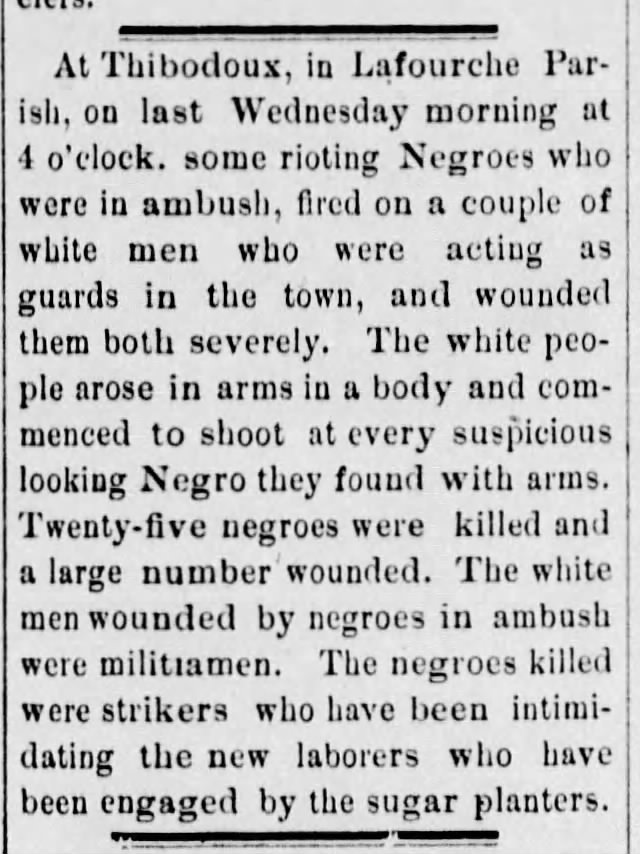
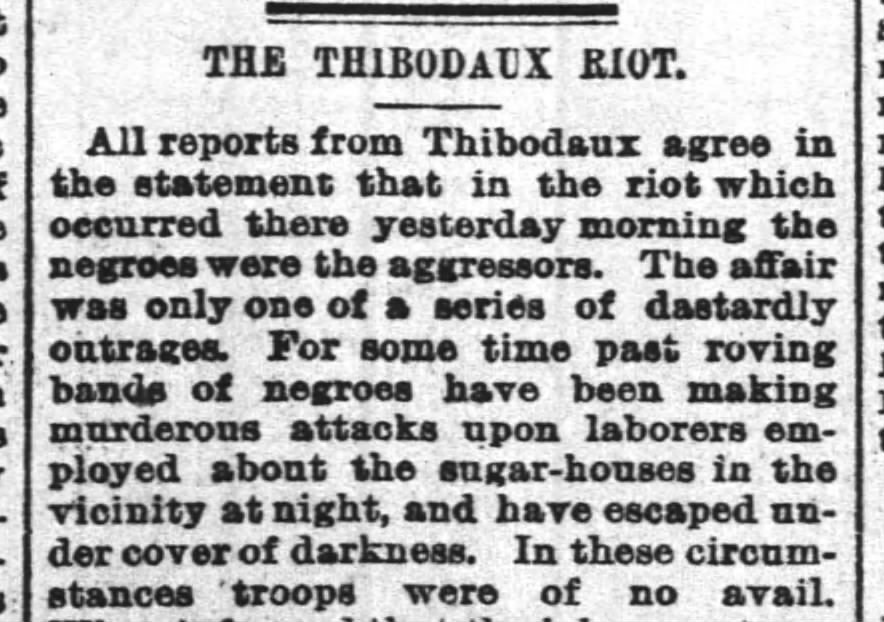
ACTIVITY
Mapping Lynchings in America
Aunt Vi explains in QUEEN SUGAR how “One night the Landrys came to take the land back. Strung up Charles’ eldest brother, hung three more Bordelons over time, including Grandaddy Angel. His Aunties Millie, Queenie and Sara Jo cut him down in the dead of night, prayed over his body and soul and then buried him right.”
This is an example of lynching. In the Bordelon family timeline, this murder would have most likely taken place in the early 1940s.
According to the Equal Justice Initiative, 4,075 documented lynchings of African Americans took place in the American south between 1877 and 1950.
Use the Map
Reflection Questions
- Where did the event take place?
- Was the victim male or female?
- Were the perpetrators brought to justice for their crime of lynching? If so, what was their sentence?
“I ain’t letting nobody take what my daddy gave me. He bled for it; I’m a bleed for it too if I have to! That’s my land, period.”
— Ralph Angel Bordelon
Once the Bordelon siblings learn the devastating truth about the history of their sugarcane farm, it spurs them to fight to keep the land which, through the years, has become an extension of their family, like a blood relative that connects them to their past, grounds them in their present and dictates their future.
In this clip highlighting QUEEN SUGAR Season 5, Episode 1, creator Ava DuVernay breaks down how real American history is woven throughout this episode.
Video clip courtesy of OWN: Oprah Winfrey Network
ACTIVITY
Terror Close to Home
On May 8, 1914, a lynching took place at the Sidney Plantation in St. James Parish (a reminder to learners that QUEEN SUGAR is filmed in St. James Parish, Louisiana).
Sylvester Washington, a Black resident, was hunted down, shot and then burned to death by a vengeful group of white men who were not content to allow him to have a trial in a Louisiana court of law.
Multiple newspapers and magazines reported the story, including Black publications such as The Crisis.
Read
- “Negro Desperado Hunted To Death”: Source: The Madison Journal, Tallulah, Louisiana, May 16, 1914
- The Crisis, July 1914
Reflection Questions
- According to Equal Justice Initiatives, The Lynching Report, “Lynching in this era and region was not used as a tool of crime control, but rather as a tool of racial control wielded almost exclusively by white mobs against African American victims. “ If lynching was not used as a means to curb criminal activity, what was the motivation behind public lynchings carried out by white mobs?
- Based on previous readings on lynchings and the murder of Sylvester Washington, why was the account published in several newspapers?
- Although lynching had largely ceased after the 1950s do racially motivated acts of terror still exist for African Americans and other marginalized groups of people within the U.S?
- What was the intent behind the public lynchings of African Americans?
Additional Resources
Lesson One: Legacy of the Land
Take a journey with QUEEN SUGAR‘s Bordelon family and follow their generational fight to keep the land of their forefathers.


